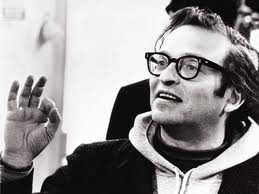By Roger Kuin
What does Sir Philip Sidney’s correspondence teach us about the man and his world? You have to realise what letters were, what they were like, and what they were for.
Some of them were like our e-mails: brief and to the point, sent for a practical reason. They were usually carried and delivered by a person known to the sender; so sometimes they are an introduction to the bearer, sometimes it’s the bearer who will tell the really sensitive news (frustrating for us!). These can tell us something about people and their specific interactions.
Other letters are long and more like a personal form of news media — meant to inform the recipient (often Sidney himself) about what is happening in the world of politics (with which religion is often mixed; it’s a time of religious wars). These are precious as sources for our knowledge of what happened. Take the example of the Turkish conquest of Tunis in the summer of 1574. One of Sidney’s correspondents, Wolfgang Zündelin, was a professional political observer in Venice, where all the news in the Mediterranean went first. So there is a series of letters from him recounting this huge amphibious victory by the Ottoman Turks, led by a converted Italian and a cruel Albanian, over the city of Tunis and its port La Goletta, defended by a mixed force of Spaniards and Italians, with a wealth of detail.
Most of us were taught about Sidney as the author of brilliant if rueful love-sonnets and of a long prose romance (ancestor of the novel) called the Arcadia. It is intriguing to meet the young man in these letters, in which poetry is never discussed and in which politics and governance are the paramount topics. We tend to forget how young he was. At 17 he went abroad and lived through a massacre in Paris; from there he travelled through Europe for nearly three years, studying in Padua, being painted by Veronese in Venice, and meeting princes from the King of France to Emperor Maximilian in Vienna.

At 22 he was chosen to head a ceremonial embassy (combined with confidential intelligence-gathering) to the new Emperor Rudolf II, which he carried off with enormous aplomb. The Emperor himself, brought up in Spain and very stiff, was not terribly impressed, but everyone else was.
Most of us know that Sidney was eventually killed in the Netherlands by a Spanish musket-ball at the age of 31; here we see him trying to manage the key port of Flushing (ceded to the English in return for their help to the Dutch against Spain), frustrated by lack of funds and support from England, trying not to despair of the Queen and hoping not only to deal the Spaniards a blow but to do some glorious deed in the process.
At the end there are three urgent lines, a scrawl really, now almost illegible in the National Archives, of a young man dying of gangrene and scribbling in bed a note calling for a German doctor he knows. Heartbreaking.
We know so much about him: more than about almost any other Englishman of his time. And yet there is still much we have to guess at. Nowhere does he state his thoughts, for instance, about religion, such a burning subject in his age. Nor does he write about literature, except to ask a friend to go on singing his songs and to tell his brother he will soon receive his, Philip’s, “toyful book”. There are no letters (that we know of) to his sister Mary, the Countess of Pembroke, herself a major poet; none to his two best friends Fulke Greville and Edward Dyer.
He was serious and charming, intense and cheerful, dutiful and ambitious. He wanted to do something for his country. Above all, he was fascinated by the idea of governance, not a word we use a lot. But for him it was everywhere. How do you govern yourself, in the face of those rebellious subjects, your passions? How do you govern a family? How do you govern soldiers, always underpaid and apt to plunder the countryside? How do you govern a country, help its allies, keep its enemies at bay? They are subjects not altogether irrelevant today; and reading his correspondence gives us an idea of the way they were viewed by a brilliant young man a mere four centuries ago.
But of course, this is not enough, in Philip Sidney’s case. We read about Sidney because we read Sidney. This astonishing young man mentioned above, in eight short years, wrote (a) the first great treatise of literary criticism in English, A Defence of Poesy (also known as An Apology for Poetry); (b) the first major sonnet-sequence in English, Astrophil and Stella; and (c) the first (then-)modern prose romance in English, Arcadia – which exists in two versions, the “Old” Arcadia, complete, and his unfinished revision of it, the “New” Arcadia.
Roger Kuin is Professor of English Literature (emeritus) at York University, Toronto, Canada. He is the editor of The Correspondence of Sir Philip Sidney (now available on Oxford Scholarly Editions Online). He has written extensively about Sidney and about Anglo-Continental relations in the later sixteenth century; lately he has been working on heraldic funerals, beginning with the very grand one of Sidney himself. He has a blog, Old Men Explore, and can be found on Facebook.
A range of Sir Philip Sidney editions available to subscribers of Oxford Scholarly Editions Online. Oxford’s scholarly editions provide trustworthy, annotated texts of writing worth reading. Overseen by a prestigious editorial board, Oxford Scholarly Editions Online makes these editions available online for the first time.
Subscribe to the OUPblog via email or RSS.
Subscribe to only literature articles on the OUPblog via email or RSS.
Image Credit: Sir Philip Sidney, the Bolton portrait. Public Domain via Wikimedia Commons.
The post Getting to know Sir Philip Sidney appeared first on OUPblog.



